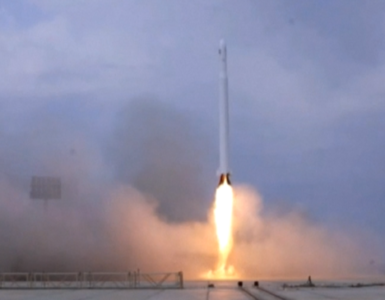From weatherization funds to electric vehicles, the White House made compromises to enlist a broad coalition that includes labor and communities of color

There’s just one problem: Independent analyses suggest that the program — which got its last big boost under the 2009 stimulus bill — isn’t a cost-efficient climate strategy. “As a pure carbon fighting policy, it looks expensive and low bang for the buck,” said University of Chicago professor Michael Greenstone, who studied efficiency efforts after leaving the Obama White House.
The weatherization plan is one of several embedded in Biden’s infrastructure proposal that reflect how political pragmatism has shaped the new administration’s governing style. Rather than seek the perfect policy answer — an approach touted by the Obama administration — they are focused on solutions that can muster a broad base of support. The plan also includes funding electric vehicles without setting a timeline for when the nation will stop selling gas-powered cars and trucks, and funding highly subsidized inland waterways without spelling out how much industry will pay for new locks and dams.
“We have to pass policies that people actually want,” said Leah Stokes, an assistant professor of political science at the University of California at Santa Barbara. “In an economics textbook, it’s efficiency all the time. That’s not the way it is in politics. The goal should be improving people’s lives.”
The political pressure is only expected to increase as the White House looks to secure enough votes to pass a big package. Many influential interest groups and lawmakers are fighting to include different ideas.
On Monday, Senate Energy and Natural Resources Committee Chairman Joe Manchin III (D-W.Va.) said he supported the infrastructure plan’s inclusion of the Pro Act, which would make it easier for workers to unionize. He made the announcement with United Mine Workers of America President Cecil E. Roberts Jr. at a virtual National Press Club event billed as outlining how coal country could manage the upcoming energy transition.
“While the industry has been in a steady downturn in job opportunities, maintaining those good-paying jobs as we reduce emissions is both possible and it’s our responsibility,” Manchin said. “Fifty percent of unions fail in their first year of organizing. This legislation will level the playing field.”
White House officials said they crafted the infrastructure proposal with several goals in mind, including addressing historical inequities and fostering jobs while also cutting carbon emissions.
“The focus across the board is to try to deliver the upside in small towns and big cities and all the places in between, with an emphasis on communities that are very often left behind and left out,” White House Deputy National Climate Adviser Ali Zaidi said in a phone interview. “It’s about making sure that the investments are made in a way that stretches the geography of opportunity to every Zip code, that fully avails the environmental justice upside and totally leans into the supply- chain and domestic manufacturing opportunities that all this presents.”
The Rev. Michael Malcom, executive director of Alabama Interfaith Power and Light, said in an interview that state residents have among the nation’s lowest electricity rates but highest bills because so many homes are older and leaky when it comes to heating and cooling.
“A major initiative like this is a game changer in the South, particularly when we look at economic injustice, because this is one of the levers that keeps people in poverty,” Malcom said. He estimated that poorer Alabamians have an “excessive energy burden” of between 20 to 35 percent.
That same reasoning prompted the Obama administration to devote $2 billion of its nearly trillion-dollar stimulus bill to the weatherization program more than a decade ago, an initiative that upgraded at least 340,000 homes in 2010 alone.
Greenstone, chief economist for the White House Council of Economic Advisers at the time, wondered whether the data justified the expense. So once he returned to academia, he ran two real-world experiments, including one of 30,000 Michigan households eligible for federal assistance and another in Wisconsin where 100,000 homes qualified for a utility efficiency program. Both found the efficiency investments were poor performers for households, because the realized savings were about half of what the engineering models had predicted.
The cost of cutting carbon through these programs translated to between $200 per ton and $300 per ton, much higher than any current market price for cutting greenhouse emissions. Greenstone said that although helping poorer Americans pay their energy bills is an important goal along with curbing emissions linked to climate change, “I would decouple them.”
“The climate crisis is so urgent that we all owe it to each other to be ruthlessly searching for the cheapest tons,” he said. “I would think in an unconstrained political world, there has to be a version of this policy that supports low-income families confronting higher energy policy prices and reduces carbon at a lower price per ton of CO2.”
The Energy Department disputed the findings of the Michigan study in August 2015, arguing that the benefits outweighed the costs if one factored in other health and safety improvements that auditors made when they inspected homes participating in the federal program. But the week before, the Environmental Protection Agency issued a major climate rule ordering states to conduct real-world trials to assess energy efficiency programs, on the grounds that engineering models overstated their benefits.
Josh Freed, who leads the climate and energy team at the center-left think tank Third Way, said in an email, “The ‘best’ use of taxpayer funds isn’t always the one that maximizes economic efficiencies.”
“In the climate space, if we cared only about optimizing economic efficiency we’d probably only consider a carbon price,” he added. “But as we’ve learned from over 15 years of carbon-pricing around the globe, that works out better on economists’ whiteboards than it does in reality.”
The fraught politics of personal cars, SUVs and diesel trucks, meanwhile, meant some highly effective climate policies didn’t make it into Biden’s plan.
Some of the biggest emissions savings in transportation would come from ending the sale of gas-powered cars by 2035, followed soon after by heavy trucks. The plan avoids those politically dicey mandates.
Before Biden unveiled his plan in Pittsburgh, Democratic Sens. Alex Padilla and Dianne Feinstein of California wrote the president urging him to set a sunset date for selling new cars that run on gas, which would give time to transition them off highways by 2050, when Biden has pledged the United States will reach net-zero emissions.
The administration didn’t do that, with Transportation Secretary Pete Buttigieg telling lawmakers “that certainly seems to be where the U.S. auto industry is headed” already. In an interview, Buttigieg acknowledged that ending the sale of such vehicles would play a key role in meeting emissions targets.
“Not only that, that’s not enough, right, because you look at the number of internal combustion engines that would still be on the road in that scenario, and will be with us for a long time,” Buttigieg said. “And that’s part of why being smart about the emissions standards is so important.”
Buttigieg said the issues will be “brought to a head by action-forcing events,” starting with the White House climate summit this month and then at the United Nations climate talks in Glasgow, Scotland, later this year. The administration plans to continue working closely with carmakers and others “who are actually doing the work of creating economic opportunity and jobs in a climate-centered way,” Buttigieg said.
Biden’s plan outlines a major investment of $174 billion “to win the EV market,” with refurbished factories, 500,000 chargers, electric buses and other measures, including spending $100 billion on consumer rebates for electric vehicles. The incentives and other policies mirror those championed by Senate Majority Leader Charles E. Schumer (D-N.Y.), who has called for major rebates when drivers buy electric vehicles.
The president’s infrastructure ambitions depend on Schumer’s ability to shepherd a package through the evenly split Senate.
Even supporters of the infrastructure push say it has elements that bend to political forces. Some economists, for instance, believe the plan’s call for “Buy American” provisions to ensure infrastructure is made by American workers will drive up the cost of the measures for the federal government. But those provisions are fiercely supported by unions and other liberal groups because they boost the amount of federal spending that has to be directed to American workers.
“We have a serious problem with infrastructure costs in this country, and I don’t see anything in the bill that addresses that,” said Adam Ozimek, chief economist at Upwork. “Indeed, the promise of strengthened Buy American provisions goes in the opposite direction, ensuring that we get even less infrastructure for each dollar than we normally do.”
And although the plan proposes plenty of funding for addressing projects in need of repair across the country, it is unclear what share of the cost industry will bear. Steve Ellis, president of Taxpayers for Common Sense, noted that Biden has designated $17 billion for inland waterways, ports, land ports and ferries — nearly 2½ times the U.S. Army Corps of Engineers’ annual budget.
About 90 percent of the inland waterway system is subsidized by taxpayers, Ellis said, because operators do not have to fund operations and maintenance and are slated to pay just 35 percent of construction costs of projects built between now and 2027.
It is impossible to tell what sort of federal funding would go to these projects, he added, without seeing more details. “That’s part of the benefit, and the downside, of a pretty sparse proposal,” he said. “Anyone can read between the lines and find what they want.”
A senior administration official, who spoke on the condition of anonymity to discuss private deliberations, said the administration would negotiate with Congress over the extent to which user fees or taxes would pay for projects on inland waterways and other forms of transportation.




